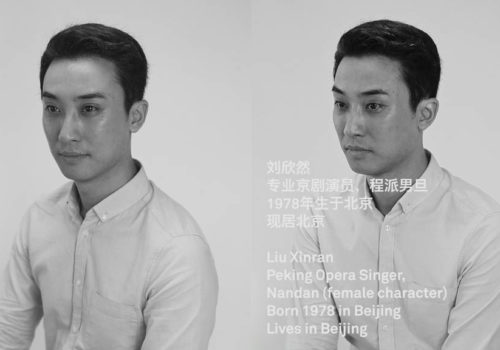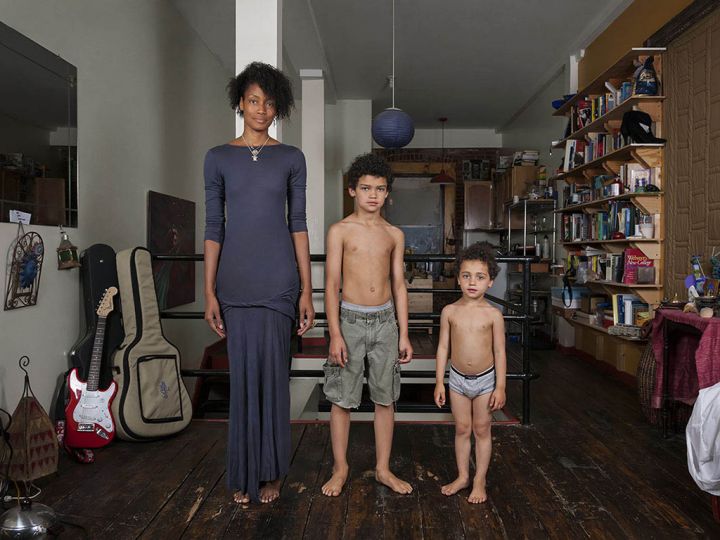Moment, Moving Moments, explores the characterization of Dashilar through still and moving images. Both individual and façade are extricated to show the historic and evolving identity of a hutong (ancient city alley or lane formed by traditional courtyard residences) that have over 600 years of history.
It is a portrait study of the individual and its context, of the static and the kinetic, of the surface and its content. Black and white was chosen to articulate the silhouette of both individual and architecture with a focus on the individual’s face and the architecture’s façade.
For the individuals, a three quarter profile shot from above allows the viewer to observe from the outside in, creating an indirect encounter as opposed to a frontal direct encounter. This technique is demonstrated in traditional Chinese paintings where objects are not always presented according to the principle of near-large, far-small. There’s no vanishing point of convergence. The 10 participating profiles include a hawk trainer who was taught the imperial philosophies of animal training practiced in the Forbidden City, a Beijing Opera Singer (Nandan) who plays female characters and a grandmother who experienced the earthquake of 1976.
The still portrait of the individual encapsulates the formal aspects and qualities of the person. Whereas, the moving portrait prioritizes content over form by superimposing textual information provided by the subject on top of their kinetic image. Still, moving image and text are separate entities orchestrated into one diptych.
The same thing can be said with the architectural portrait, which captures a moment in time, highlighting the formal aspect of the architecture. However, as with the text over the moving individual portrait, the movement in the city takes precedence over the context or architecture. The paradox is when movement appears to be still yet the content of the space is still apparent through light and shadow. There appears to be an atmospheric movement present at this time. An exploration of the facades in both day and night allow for these atmospheric qualities to become more pronounced . The 10 facades captured include a chuar booth (meat on a stick booth), the last remaining bookstore in Dashilar, and a fruit and vegetable market.
With some traditional Chinese scroll paintings, a portrait was represented in an analytical way where a moment was captured by making the viewer’s eye follow the rotation of the scroll from one end to the other, much like an animation. And the moving moments of Dashilar reference this viewing experience through modern mediums- photography and video.
Dashilar was given its name in the Ming Dynasty but it was during the Yuan Dynasty when the area started developing. It is known for being one of the most popular cultural and commercial hutongs existing today. A place that thrived during the Qing Dynasty with the emergence of many commercial businesses and a place that was harmed by fires and earthquakes, Dashilar continues to redefine itself and its relationship with its people. This portrait of Dashilar analyzes modernization and it’s relationship to tradition. It allows us to imagine what it once was, what it has become and what it potentially can be.
This project was created in collaboration with Dashila(b). The exhibition is hosted by Beijing Dashilar Investment Ltd. Electronic Sponsor: SONY Store
CYJO
[email protected]
Moment, Moving Moments
September 28th, 2012– October 7th, 2012
Solo Exhibition
No.8 Dawailangying Hutong, The Factory
Dashilar, Xicheng District,
Beijing, China

















